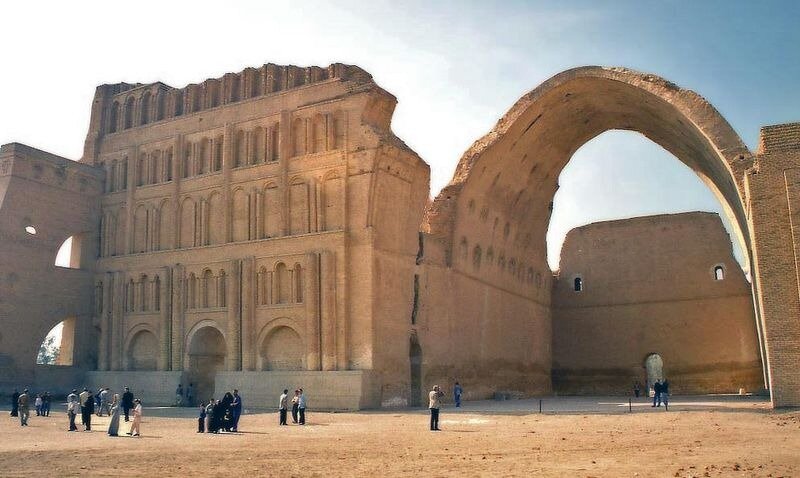Special scaffolding to protect Taq Kasra from probable collapse

TEHRAN – Taq Kasra, a Persian masterpiece of architecture in Iraq, will soon be protected against probable collapse with the help of special scaffolding.
In an emergency measure, the international alliance for the protection of heritage in conflict areas (ALIPH) is set to erect special scaffolding over Taq Kasra to prevent the ancient monument from further collapse, Mehr reported on Saturday.
Taq Kasra (the Arch of Ctesiphon), located 40 km south of Baghdad was built in the 6th century CE. It is the world’s largest brick vault and the largest free-standing arch constructed until modern times.
A part of a Sasanian palace complex, it stands at 37 meters high and 26 meters wide, making it a unique monument of great historical and cultural significance.
Taq Kasra poses a very significant conservation challenge and a series of partial collapses of the brick vault in 2019 and 2020 shows the urgency for the stabilization measures.
Following a conservation assessment ALIPH financed at the request of the Iraqi Ministry of Culture, Tourism, and Antiquities in November 2020, this project will implement recommended urgent emergency measures, according to ALIPH.
To prevent further collapse, the project will install specialized scaffolding that will support the arch, and install sensors to monitor the cracks in the monument. The work is supported by a high-resolution 3D scan financed by ALIPH and prepared by ICONEM in January 2021.
“Once the arch is stabilized, the teams will develop a full conservation plan.”
Back in January, some Iraqi social media users posted pictures of Taq Kasra, writing the vault of the monument is partly collapsed, prompting social media activists and cultural heritage lovers to criticize the Iraqi government over what they named as a “neglect” of the monument.
A glimpse of Persian art and architecture under Sassanids
The Sassanid era (224 CE–651) is of very high importance in the history of Iran. Under Sassanids, Persian art and architecture experienced a general renaissance.
Architecture often took grandiose proportions such as palaces at Ctesiphon, Firuzabad, and Sarvestan that are amongst highlights of the ensemble.
Crafts such as metalwork and gem-engraving grew highly sophisticated, yet scholarship was encouraged by the state. In those years, works from both the East and West were translated into Pahlavi, the language of the Sassanians.
The dynasty evolved by Ardashir I and was destroyed by the Arabs during a period of 637 to 651. The dynasty was named after Sasan, an ancestor of Ardashir I.
The Sassanid archaeological landscape also represents a highly efficient system of land use and strategic utilization of natural topography in the creation of the earliest cultural centers of the Sassanid civilization.
AFM
